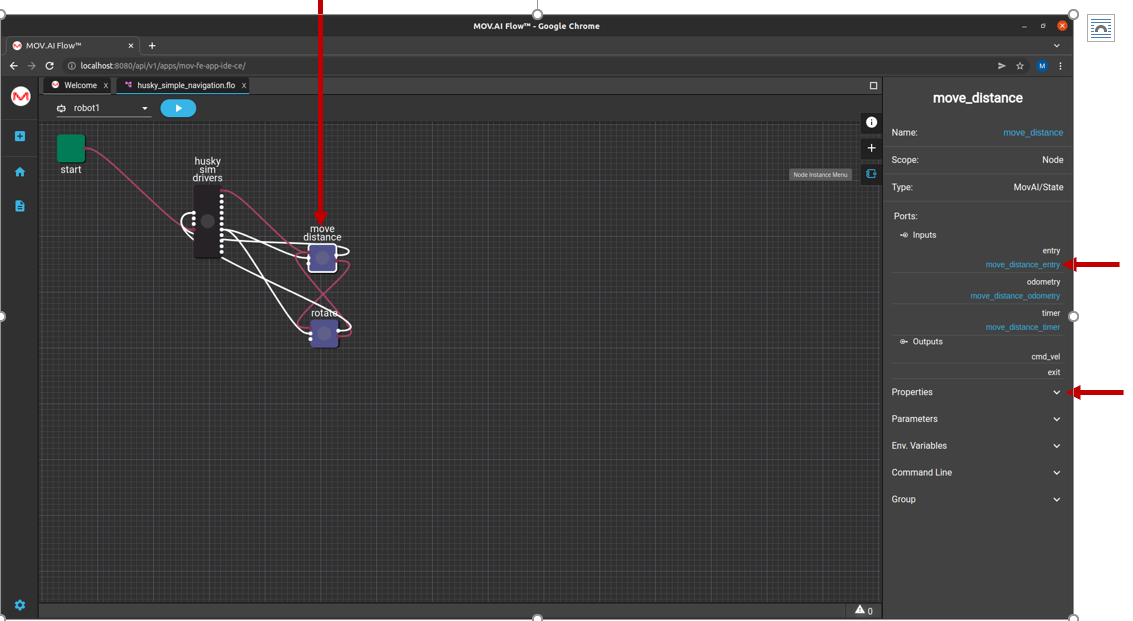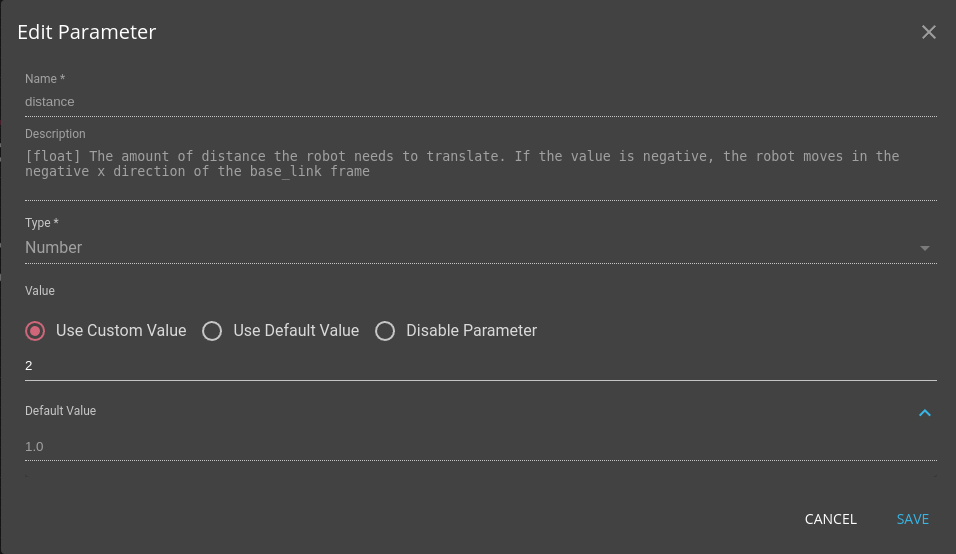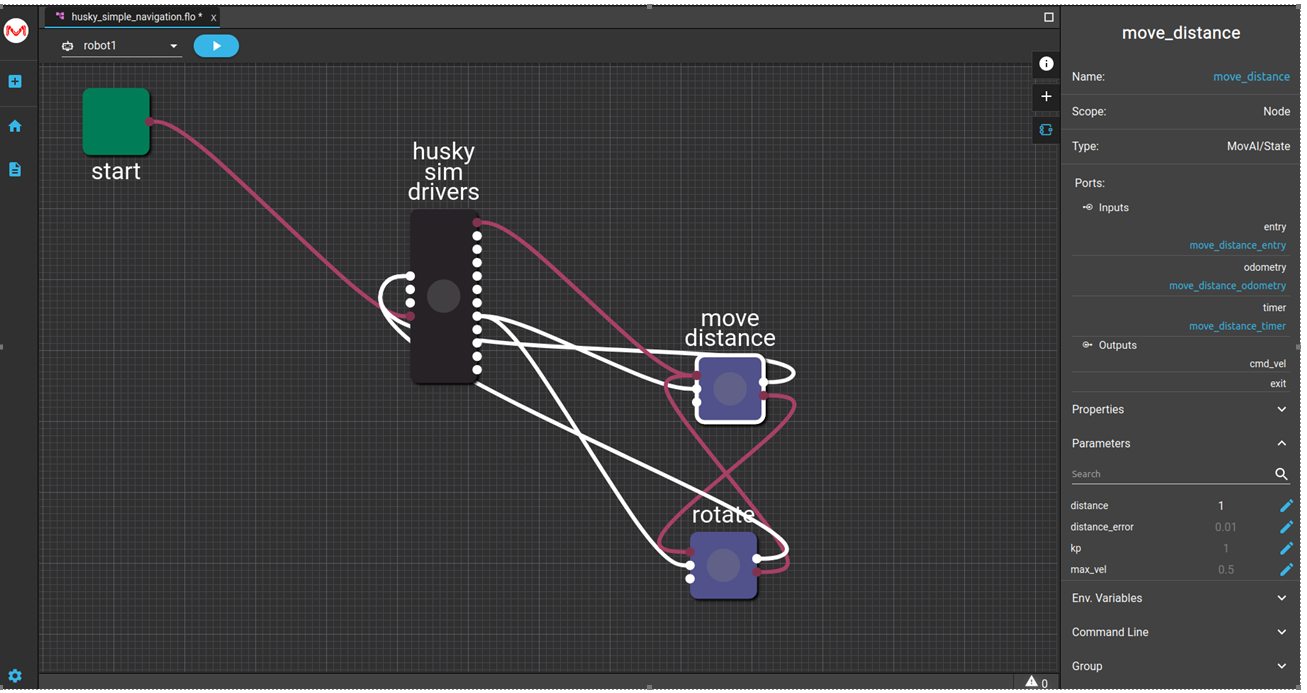Customizing Flow Behavior
MOV.AI Flow™ enables you to easily configure the properties of a robot’s behavior.
The definitions of a flow can be modified as necessary and reused for any robot. If you use the same flow for a different robot, the main thing to be modified is the robot driver's subflow (such as the husky sim driver) that provides drivers, controllers, sensor outputs, services and so on that enable the connection (control and feedback) between MOV.AI Flow and the robot simulator or to a real robot. This may be the only thing that needs to be modified.
Here’s an example of how easy it is to customize a robot’s behavior in a specific flow using MOV.AI Flow.
To customize the distance that the robot travels –
- Open an existing Flow or open one of the flows that were provided by MOV.AI, such as the Simple Navigation: Husky demo, as described in Launching the Gazebo Fortress Simulator.

-
Click on the
 button on the top right of the flow diagram to expand the properties pane of this flow on the right.
button on the top right of the flow diagram to expand the properties pane of this flow on the right. -
Click on a node (for example the move distance node) to display its properties in the right pane, as shown below –

- Click on Parameters to expand it to show all the customizable parameters provided for this node. For example, as shown below –

This example shows that currently, the value of the distance property is 2, meaning that the robot will travel 2 m.
- For example, to modify this distance, click the Edit
 button next to the distance property to display the following –
button next to the distance property to display the following –

This window describes the purpose of this property. For example, the description above reads –

- This page also enables you to modify the configured distance value.
To do so –
- Make sure that the Use Custom Value option is selected.
- Change the number in the Value field to specify the distance that you would like the robot to travel (for example, 1 m) and then click SAVE.
The next time you click the Play  button, the robot will travel 1 m in each direction of the square.
button, the robot will travel 1 m in each direction of the square.
MOV.AI Flow saves you the trouble of having to find the required parameter in a yaml file or some other type of large configuration file.
You can also click on any of the display parameters, such as kp, to see the description of what it does and to modify its value.
Default parameter values that were defined in the node template appear grayed out. Parameter values that have been edited (such as distance, as described above) appear white. For example, as shown below –

Updated 8 months ago
